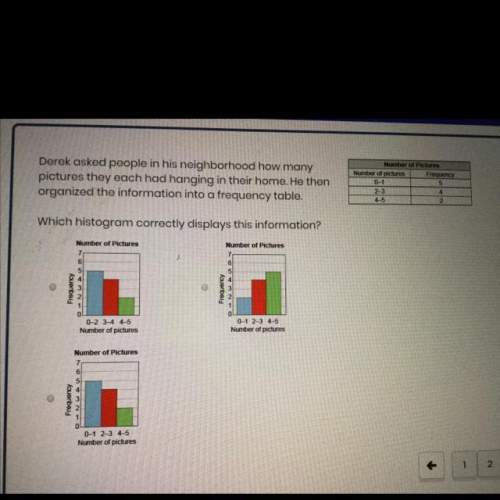
Mathematics, 25.06.2019 21:30 mikey200059
Fewer young people are driving. in 1983, 87% of 19-year-olds had a driver’s license. twenty-five years later that percentage had dropped to 75% (university of michigan transportation research institute website, april 7, 2012). suppose these results are based on a random sample of 1200 19-year-olds in 1983 and again in 2008. a. at 95% confidence, what is the margin of error and the interval estimate of the number of 19-year-old drivers in 1983? b. at 95% confidence, what is the margin of error and the interval estimate of the number of 19-year-old drivers in 2008? c. is the margin of error the same in parts (a) and (b)? why or why not?

Answers: 1


Another question on Mathematics

Mathematics, 21.06.2019 19:30
Agarden consists of an apple tree, a pear tree, cauliflowers, and heads of cabbage. there are 40 vegetables in the garden. 24 of them are cauliflowers. what is the ratio of the number of cauliflowers to the number of heads of cabbage?
Answers: 2

Mathematics, 21.06.2019 20:30
Someone me what is the area of this figure? 18m 18m 8m 16m
Answers: 2


Mathematics, 22.06.2019 00:30
What is the area of the parallelogram? 48 sqrt(3)cm2 48 cm2 24 sqrt (3) cm2 24 cm2
Answers: 2
You know the right answer?
Fewer young people are driving. in 1983, 87% of 19-year-olds had a driver’s license. twenty-five yea...
Questions

Social Studies, 25.03.2020 02:15

Computers and Technology, 25.03.2020 02:15


Mathematics, 25.03.2020 02:16




Mathematics, 25.03.2020 02:16

English, 25.03.2020 02:16




Geography, 25.03.2020 02:17







 , where n= sample size ,
, where n= sample size ,  is the sample proportion and z*= critical z-value.
is the sample proportion and z*= critical z-value.










